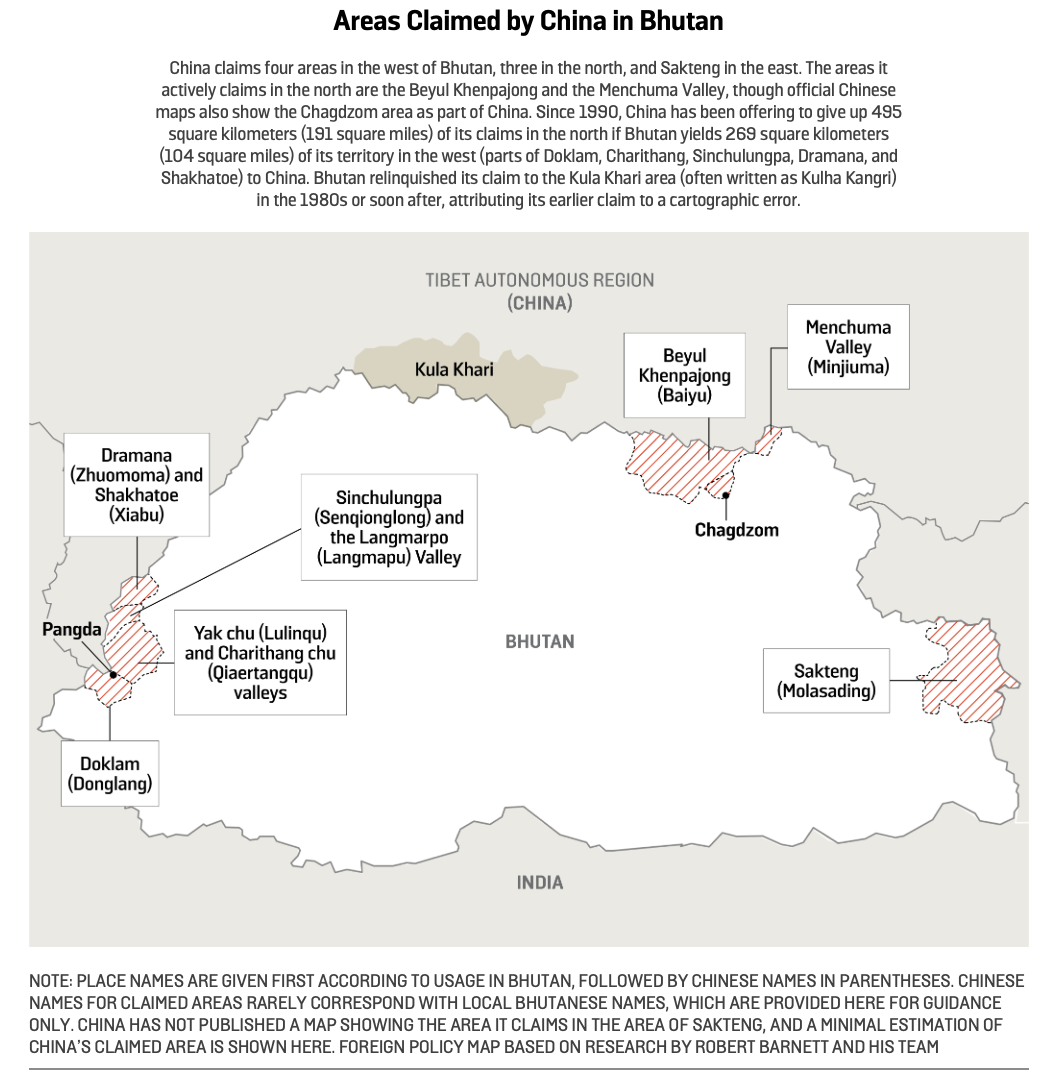China Is Building Entire Villages in Another Country’s Territory
It’s not often that a single article opens up a major window into a vital, under-studied area. This must-read piece does all that, and more… Be sure to read the fascinating details and view the informative maps and revealing photos—many of which show immediately why there were no substantial “settlements” in the contested but climatically harsh hinterlands before PRC policies placed some there strategically.
Robert Barnett, “China Is Building Entire Villages in Another Country’s Territory,” Foreign Policy, 7 May 2021.
Since 2015, a previously unnoticed network of roads, buildings, and military outposts has been constructed deep in a sacred valley in Bhutan.
In October 2015, China announced that a new village, called Gyalaphug in Tibetan or Jieluobu in Chinese, had been established in the south of the Tibet Autonomous Region (TAR). In April 2020, the Communist Party secretary of the TAR, Wu Yingjie, traveled across two passes, both more than 14,000 feet high, on his way to visit the new village. There he told the residents—all of them Tibetans—to “put down roots like Kalsang flowers in the borderland of snows” and to “raise the bright five-star red flag high.” Film of the visit was broadcast on local TV channels and plastered on the front pages of Tibetan newspapers. It was not reported outside China: Hundreds of new villages are being built in Tibet, and this one seemed no different.
Gyalaphug is, however, different: It is in Bhutan. Wu and a retinue of officials, police, and journalists had crossed an international border. They were in a 232-square-mile area claimed by China since the early 1980s but internationally understood as part of Lhuntse district in northern Bhutan. The Chinese officials were visiting to celebrate their success, unnoticed by the world, in planting settlers, security personnel, and military infrastructure within territory internationally and historically understood to be Bhutanese.
This new construction is part of a major drive by Chinese President Xi Jinping since 2017 to fortify the Tibetan borderlands, a dramatic escalation in China’s long-running efforts to outmaneuver India and its neighbors along their Himalayan frontiers. In this case, China doesn’t need the land it is settling in Bhutan: Its aim is to force the Bhutanese government to cede territory that China wants elsewhere in Bhutan to give Beijing a military advantage in its struggle with New Delhi. Gyalaphug is now one of three new villages (two already occupied, one under construction), 66 miles of new roads, a small hydropower station, two Communist Party administrative centers, a communications base, a disaster relief warehouse, five military or police outposts, and what are believed to be a major signals tower, a satellite receiving station, a military base, and up to six security sites and outposts that China has constructed in what it says are parts of Lhodrak in the TAR but which in fact are in the far north of Bhutan.
This involves a strategy that is more provocative than anything China has done on its land borders in the past. The settlement of an entire area within another country goes far beyond the forward patrolling and occasional road-building that led to war with India in 1962, military clashes in 1967 and 1987, and the deaths of 24 Chinese and Indian soldiers in 2020. In addition, it openly violates the terms of China’s founding treaty with Bhutan. It also ignores decades of protests to Beijing by the Bhutanese about far smaller infractions elsewhere on the borders. By mirroring in the Himalayas the provocative tactics it has used in the South China Sea, Beijing is risking its relations with its neighbors, whose needs and interests it has always claimed to respect, and jeopardizing its reputation worldwide. … … …






































